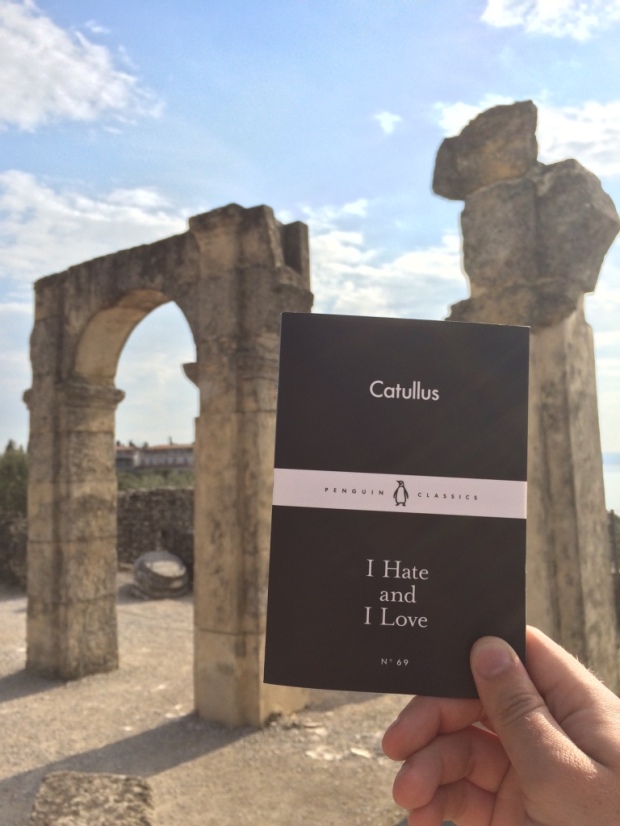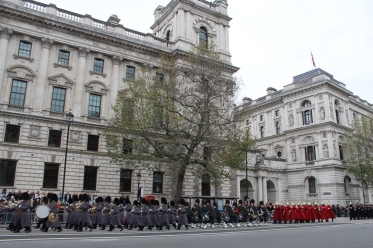Good news – I’m alive and well! Feeling very conscious and rather guilty that I haven’t blogged in while, which will be explained in due course.
I said as much to one friend, who in turn said I shouldn’t feel guilty – writing should be fun after all. This was excellent advice (she’s wise beyond her years) but I’ve still been really keen to get this blog posted.
So here I am, at last. In actual fact, I read Dante’s Circles of Hell a few weekends ago, when summer was on the brink of falling. It was a hot, sticky day – a perfect reflection of the fiery flames of hell.
I’d not read any Dante before. Our paths crossed here and there at uni but never long enough to form a real bond.
My future brother-in-law (now, that is fun to say!) chose this Little Black Classic and I’ve been so excited to read it. I’m a bit of a Classical nerd, something I’m sure I will discuss when reading more specifically classical texts. Dante draws on so many ancient poems and myths, so I was enormously excited to read it.

Circles of Hell is taken from Dante’s epic poem Inferno, which is followed by Purgatorio and Paradiso, altogether forming his Divine Comedy.
As the three books imply, this was not going to make for jolly reading, which, it must be said, I was rather looking forward to. I relish a misery read.
Dante was a thirteenth-centry Italian poet and was inspired by the Greek poet Homer, who wrote The Iliad and The Odyssey, and Virgil, the Roman poet who wrote The Virgil.
In the Circles of Hell, the poet transforms himself into a character, who in turn is led through the circles of hell with Virgil as his personal tour guide. Please keep all arms and legs inside the moving vehicle at all times etc.
In the first canto of this Classic, called Gates of Hell, Virgil explains to us that those who are sent to the circles of hell “were void alike of honour and ill fame.”
Each circle behind these gates are intended for a particular type of sinner, with each specific fate designed to reflect that sin. Specifically, Virgil leads Dante and readers to pass through the circles of the lustful, the gluttonous, the wrathful, thieves and traitors, to name but a few.
As they are incredibly detailed and at times a little ambiguous, I thought perhaps I would touch on some stand out moments in Circles of Hell.
In the second circle, intended for the lustful, Dante sees some favourite faces from Classical myth – Helen, Paris, Achilles, Dido, Cleopatra to name a few.
One of the damned tells Dante
“There is no sorrow greater / than, in times of misery, to hold at heart / the memory of happiness.”
I really lingered over this. I think this is wonderfully melancholic and very perceptive. There are instances when life seems truly blue and happy memories cannot comfort but rather do the reverse. We all enjoy a good miserable wallow on occasion.
In the third circle, for the gluttonous, we meet Cerberus, another popular mythical creature:
“Cerberus, weird and monstrously cruel, / barks from his triple throats in cur-like yowls / over the heads of those who lie their drowned. / His eyes vermilion, beard a greasy black, / his belly broad, his fingers all sharp-nailed, / he mauls and skins, then hacks in four, these souls.”
Three-headed Cerberus makes Fluffy from Harry Potter look like Lassie.
But Cerberus isn’t the only creature to reside in the underworld. There are harpies, which are
“human from neck to brow, / talons for feet, plumage around their paunches, / they sing from these uncanny trees their songs of woe.”
*Shudder*. These are not the woodland creatures that I know and love. Take this charming stag that, this past weekend, I had the pleasure of meeting. He settled not two metres from our picnic for a lethargic break, like a loyal dog.

‘So what’s the appeal of visiting Hell?’ I hear you ask. ‘Why would Dante be crazy enough to want to visit these monsters?’
Well, friends, he does encounter Cerberus and co., but Dante has the luxury of making a passing visit. Like us, the reader, and unlike the pour souls who now reside in fiery inferno for all eternity, he can leave.
Plus, he also has the opportunity of talking to the eternally damned, which is pretty cool.
For example, in the circle for thieves, one chap says:
“It pisses me right off … / far more than being ripped away from life, that you have got to see me in this misery.”
I could go on and on. Blood, tears, snakes, monsters, misery, shame, horror, slime, slobber, violence. The Circles of Hell has it all.
But Dante, in turn led by Virgil, leads us away and back in to the light.
The closing words of this Little Black Classic are my favourites, possibly of any of the Classics I have read thus far.
“Now we came out, and once more saw the stars.”
And thus, on the UK’s August Bank Holiday Monday, I set out for the iconic National Gallery in Trafalgar Square, one of my favourite places to London. It’s the beating heart of the city, with the Mall, Westminster, Soho, Piccadilly etc. branching off it like pulsing veins.
In contrast to the sunny day in which I read Circles of Hell, the bank holiday was dreary and wet. It poured and it poured. Constantly. A subtle indication that Autumn had arrived.
And so, like a true Brit, I headed out in to the rain with a sniffle and eternal optimism in tow… “It looks like it’s trying to brighten up.”
It did at least allow for this photo, in which I channelled my inner Gene Kelly. I had ‘Singing in the Rain’ stuck in my head for the rest of the day, much to the dismay of everyone around me.

The Gallery is spectacular to explore. Like yours truly, you don’t need to know anything about art, you can just stroll leisurely before heading for a reviving cup of tea in the cafe.

It seemed appropriate to head out in search of art. My sister, who you hopefully remember from The Beautifull Cassandra, studied Art History at uni.
Mum says that with my sister’s art knowledge and my love of books, new worlds have been opened up to her, which is a lovely thought. It certainly does mean that I’ve been lucky to see a lot of art in recent years with my sister, who can point out things I wouldn’t ordinarily notice in a painting and explain it so eloquently that even I, a total simpleton, can understand.
With her and my future brother-in-law (!) in mind, I wondered the halls of the Gallery, passing all of its treasures.
Here I found Bartolomé Bermejo’s Saint Michael Triumphs Over the Devil, and turned into one of those irritating people who look at life through a camera lens, rather than just enjoying the exhibit for what it is.

It must be said, Saint Michael looks pretty calm for someone about to plunge a sword through a monster. Heavenly, ethereal, angelic – or a bit lifeless? I was instead drawn to the the Devil, a bat-like creature that leers and laughs at St Michael and visitors of the National Gallery.

Prior to visiting the Gallery, I had earmarked two other paintings that I wanted to visit with Dante in mind. Which is where I come to the delay in this blog post…
Alas the National Gallery has been undergoing ongoing and indefinite room closures in retaliation to the threat of privatisation of public services. In a nutshell, an outside firm has been tasked with managing hundreds of Gallery employees, and there is a threat that employees who don’t transfer may lose their jobs.
Many staff have worked at the Gallery for decades, and so it’s a pretty huge deal to possibly have their jobs sold off.
Due to this, I checked the Gallery’s website every day for a week for more information, hoping the two rooms I needed would be opened to the public. I work on the Strand, a stone’s throw from Trafalgar Square and the Gallery. (Yes, I am very very lucky. No that’s not sarcasm, I truly am lucky!)
I eventually emailed the Gallery, explaining that I wanted to publish my blog pronto and was waiting on these paintings being revealed to the public.
Within 24 hours I had a reply, and one of the wardens (who has worked at the Gallery for some 12 years) very kindly unlocked the two rooms that I needed so that I could take some photos.
I was taken behind the scenes of the gallery, through motionless, echoing hallways and giant locked doors, masterpieces looking down at me from their painted walls.


Here I was finally able to see Luca Giordano’s Mythological Scene with the Rape of Proserpina, which features our three-headed friend Cerberus.

Needless to say my pictures don’t do the artworks any justice. But, if I’m honest, Cerberus here seemed a little pathetic compared to Dante’s depiction. This guy with the staff looks like he’s throwing the monster a treat.

It was an epic painting – huge. But I was rather underwhelmed by Cerberus.
We then headed for David Teniers the Younger’s The Rich Man Being Led to Hell, a much smaller painting in contrast to the previous but I found it far more compelling.

It’s hard to take your eyes off the struggle between the fat, well-dressed rich man and the smirking devil. But if you look around them, there are strange wide-eyed toads and and lizards, who along with a band seem to be goading them along into hell’s fire.
I found it difficult to leave – it was like the devil was drawing me into his lair.
Eventually I did leave and, like Dante, was pleased to once more see the stars.
Thank you to my brother-in-law-to-be Matt for choosing this Classic! Matt, please speak to Katy for far more educated artistic thoughts.
Next time I will be reading Elizabeth Gaskell’s The Old Nurse’s Story.










































































